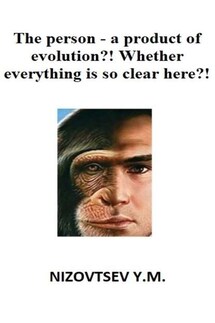The driving force and source of development of the person and his communities - страница 7
M.I. Artamonov believes that Gumilev underestimates a role of social, cultural, religious and other non-biological factors in ethnogenesis, exaggerating a natural factor and equating ethnos and population [20, p. 75-77].
Yu.K. Efremov notes numerous mistakes of Gumilev at his definition of communication of ethnogenesis with landscapes [21, p. 77-80].
L.S. Klein sees no reason for subdivision the life cycle of the ethnos into four phases and for accommodate of this cycle into the interval of 1200-1500 years [18, p. 237-238].
A.L. Yanov believes that Gumilev equates events of ethnic and political history [22, p. 110-111].
L.S. Klein believes that the "passionaries" of Gumilev are identical to a sort of mutants who have acquired an increased ability to absorb the energy of the biosphere, and, accordingly, to stimulate the development of the ethnos [18, p. 238]. From the point of view of psychology, "passionaries" in Gumilev's representation are people who have a psychotype with a pronounced manic tonus.
L.C. Klein, L. A. Yanov, V. A. Shnirelman and S. A. Panarin also skeptical about the impact of the bursts of cosmic radiation as a push to the increase of passionarity [18, p. 238-239].
For its part, to this criticism we can add the following.
L.N. Gumilev is looking for the foundation of his concept of ethnogenesis in external factors, such as cosmic ray bursts, landscapes, historical and geographical features of a given territory, the state of adjacent ethnoses, etc., whereas external factors can really only manifest, being the opposing party, action on development both the person, and his communities of internal, hidden forces, strengthening or weakening this action, though, of course, out of the environment can be no question about development of something.
These forces or force Gumilev also did not discover. The only internal property that Gumilev discovers in a person is the presence in him of an oscillation of some energy of incomprehensible origin and properties that determines the absence or presence of passionarity: this unknown and unverifiable energy incomprehensibly how is being taken from the Earth's biosphere and is transformed by the person into work. Moreover, the fact of obtaining additional energy passes beyond the consciousness of a person. This conclusion seems completely unserious. Therefore, it turns out: it is not known what "destroys, – according to Gumilev, – the instinct of self-preservation."
Gumilev's view on the fixed time of the life cycle (existence) of the ethnos in the interval 1200-1500 years is also an erroneous view. It's not even about how many thousands of years it can exist – everything in our world of course – essence of the problem is completely different.
It is impossible to consider such complex and changeable formations – the holistic communities, – as a matter of fact. similar to the life of a living being – with its fixed cycle from birth to the period of blossoming with the subsequent sunset: ups and downs, a stable existence in the intermittent development of each community can be many for thousands of years, and we have many similar examples, unlike the rather labored examples given by Gumilev.
In the last section we will dwell on this problem in more detail.
It seems that all this criticism completely destroys the concept of Gumilev, reducing it to an amateurish craft for the needs of a semi-educated public.









